They think I'm hiding in the shadows. But I am the shadows.
— Bruce Wayne/Batman, narrating his nightly crusade
Nothing could’ve prepared me for the opening monologue and accompanying footage depicting the grimy landscape that is Matt Reeves’ Gotham City. The trailers don’t do the atmosphere of it justice. From the rain-soaked streets to the camera holding on to the shrouded areas criminals fear a certain vigilante lurks within, I knew this was a different kind of Batman film. This was something genuinely unexplored by any previous movie, animated or live-action. Reeves has masterfully concocted a blend of genres, breaching new character aspects as if he’s directly responding to criticisms that the character of Batman has been exhausted.
A complete overhaul of Warner Bros.’ original intention for the character in their DCEU, the heavily-scrutinized Batfleck is replaced by Battinson as Reeves gives us a Caped Crusader that hasn’t found his place in Gotham yet. The Batman starts about two years into Bruce Wayne’s (Robert Pattinson) crusade on crime, already a symbol of fear and vengeance amongst the criminal element. When a new killer calling himself the Riddler (Paul Dano) begins targeting influential figures in Gotham, he digs within the city’s underworld to uncover corruption within the system and unmask the killer before it’s too late. Teaming with his only police ally, Lt. Jim Gordon (Jeffrey Wright), and the illusive Selina Kyle (Zoë Kravitz), Wayne discovers his familial involvement in the ploys that rule Gotham and the Batman’s unassuming role in the Riddler’s master plan.
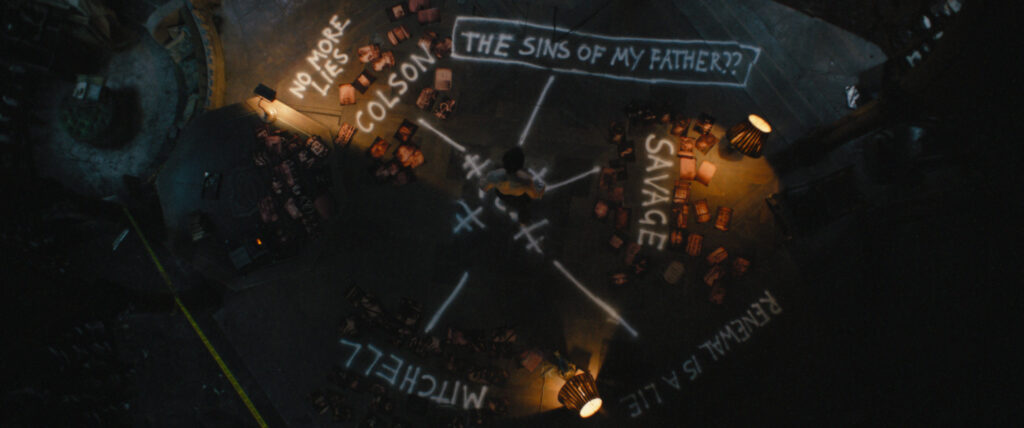
It’s a compelling premise, harkening back to the crime/detective stories of the comic book legend’s early years. A fair assessment, many have drawn comparisons to neo-noir thrillers like Se7en and The French Connection. The big secret is the identity of an informant that helped bring down crime boss Sal Maroni’s drug operation, which earned the recently murdered high-profilers (Mayor Mitchell, Commissioner Savage, and DA Colson) much praise from the city.
Despite the decently strong mystery, it takes a back seat to Batman’s personal exploration as the Riddler points a blameful finger at the Wayne Family. Reeves fumbled a bit in that balance of the mystery as it encompasses the film’s drive versus the character-centric stakes of these revelations for Bruce on his own. While the snitch’s identity is paramount for the characters, it falls flat compared to the other disclosures Bruce faces before and after its discovery.
The movie’s runtime of about three hours goes by like a breeze. You’ll find that you’re not slogged for action or caught in a numbingly-dull moment. Even scenes you might consider “slow down moments,” like Alfred talking with Bruce from his hospital bed about the truth about his father, had you following closely. Once the character of Bruce Wayne/Batman allures you with his raw brutality and views on a family legacy, you won’t want the show to stop. You’re left wanting more by the end of it.
Reeves was right in saying that the only person he could cast as his Batman was Robert Pattinson. Knowing the actor, knowing the work he’s done in independent movies like Cronenberg’s Cosmopolis and the Safdie Brothers’ Good Time, The Batman matches the tone Pattinson’s screen presence demands. I’m not a mind reader, but you can look behind his acting and see the genuine enthusiasm (perhaps that perfect twinkle in his eyes during close-ups) Pattinson had when interacting in this new world with Reeves and the cast. It’s the definition of spot-on casting.
If you laid out this character of Bruce Wayne on paper, he’s a weirdo. I’ve seen all the Twitter jokes: he’s emo, an “incel”/virgin, doesn’t shower, and is an anti-social recluse. Gone is the dichotomy between playboy personality and gruff vigilante; the switch is always flipped on Batman mode. Here we get a Bruce Wayne who doesn’t want to be himself.
He wants to be this agent of vengeance for his creation, punishing criminals who poison a city he has some hope in. The psychology, the mindset behind all of that, is played with integrity only Pattinson could bring to this interpretation of the character. He even said so himself:
Even my agents just thought, 'Oh this is interesting. I mean, I thought you only wanted to play just total freaks all the time.' I'm like, he is a freak. This is another freak!
<a href = "https://www.youtube.com/watch?v=pz52gPH3ou4" — Robert Pattinson Breaks Down His Most Iconic Characters | GQ
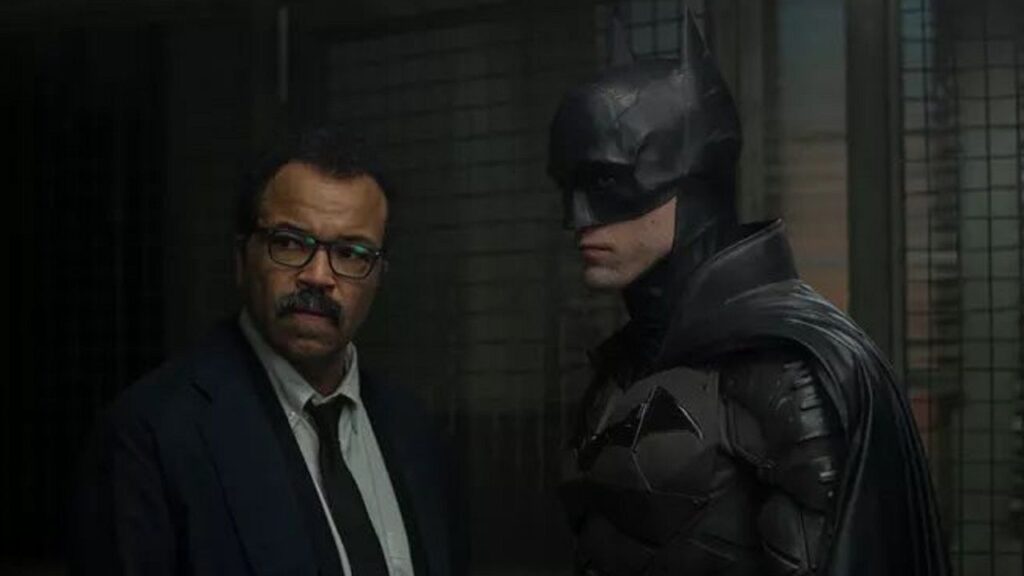
And that’s the real draw of the movie: its freakiness, unafraid to distance itself from “realism” (something I had an issue with Nolan’s trilogy), is what elevates it to something else. You start to realize that everyone in this film is somewhat of an oddity, even the straight-and-narrow Jim Gordon amongst his crooked colleagues; the landscape of Gotham is transformative to all who call it home. The Riddler is a product of neglect, an orphan lost and abused by the system as it fell away from (you guessed it) corruption. As a viewer of the CW’s Arrow, I was half-expecting Battinson to start shouting about people “FAILING THIS CITY!”
The gallery of supporting characters goes above and beyond as they…well, support! In his video review, YouTuber and filmmaker Ralph Sepe pointed out that the film follows almost exclusively from Bruce Wayne’s perspective. When an explosion knocks him out, we’re treated to his view as he goes in and out of consciousness. Doing so makes sure that we never lose perspective on Bruce’s evolution in the course of events (over a week or so) and see how the characters change him and vice versa.
The Riddler was a fantastic villain to portray the side effects of Batman’s vigilantism, being considered an intellectual equal eager to challenge the hero. And challenge him he does, breaking down the high image of his father, inadvertently, and making him recognize the failings of his operation to clean up Gotham. Paul Dano is almost camp in his portrayal, making me chuckle at the lunacy he goes into during his Arkham interrogation. Dano dominated that scene, towering over his enduring rival. But you can see the nuances of disturbance, anti-social disorder, displayed as sociopathy or psychosis. The fact that Riddler believed he was working with Batman (and considering he helped expose the scum within Gotham’s infrastructure, who’s to say he wasn’t?) told us so much about the character after we think we knew it all.
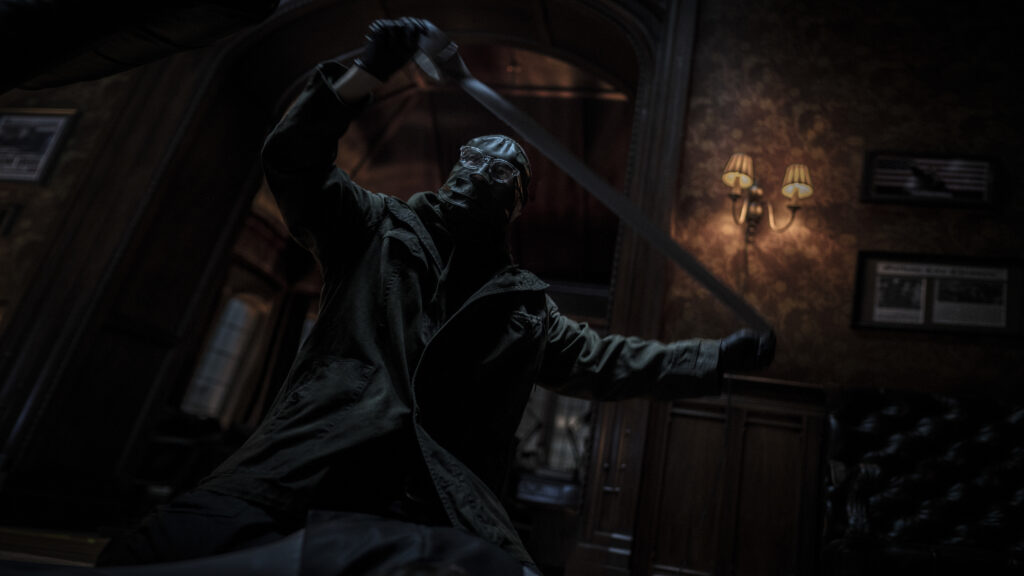
Kravitz’s Selina Kyle is the romantic foil, at first part of a reluctant team-up as she helps track down her kidnapped girlfriend. Much like the Catwoman of the comics, she pops in and out of the Greatest Detective’s mission to get what she needs out of their tenuous partnership but comes to support him as she becomes the catalyst for the overarching mystery. She’s sexy, but the appeal isn’t what allures Wayne. Her moral detachment from the rest of what’s going on is another antithesis to Batman’s ideology of helping those who need it for no self-gain. It’s not played as “she’s a stone-cold b*tch” either. Kyle was taught to defend herself and live for herself, and Kravitz’s charm in the role makes you root for her as she gets in Batman’s way.
Oz Cobblepot or, as he’s better known, The Penguin, played by the unrecognizable Colin Farrell, was a blast to watch, throwing classic Italian mobster-style quips at the “costumed freak.” With the film’s mystery revolving around an anonymous informant, where revealing his identity could bring down the whole city and its corrupt (there’s that word again) infrastructure, Oz served as an excellent red herring for being the rat. I mean, look at the guy. He’s got power-hungry vibes written all over him, especially when standing next to his boss, Falcone.
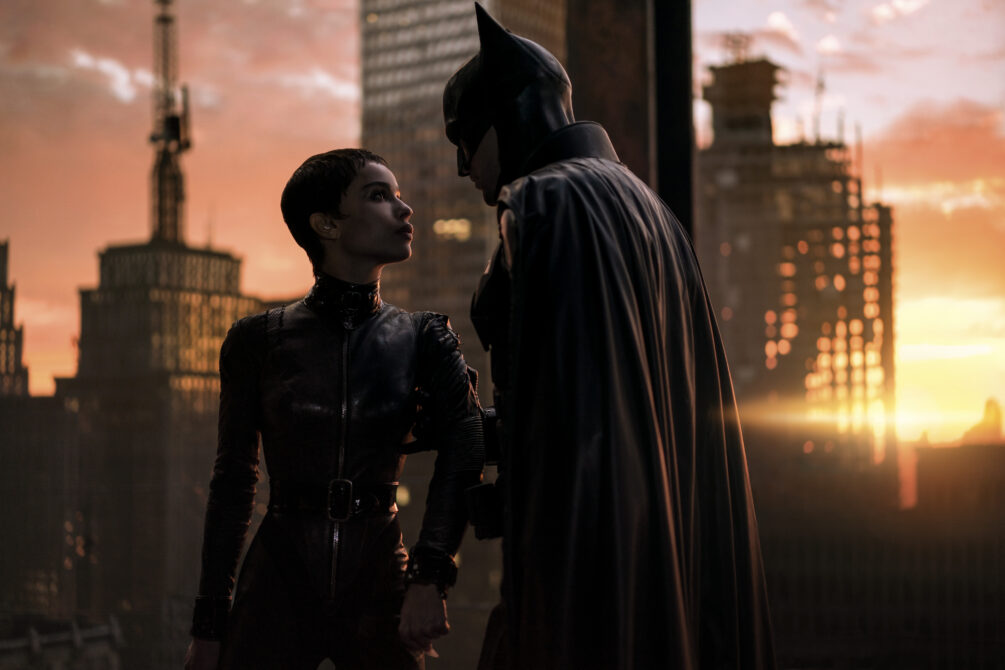
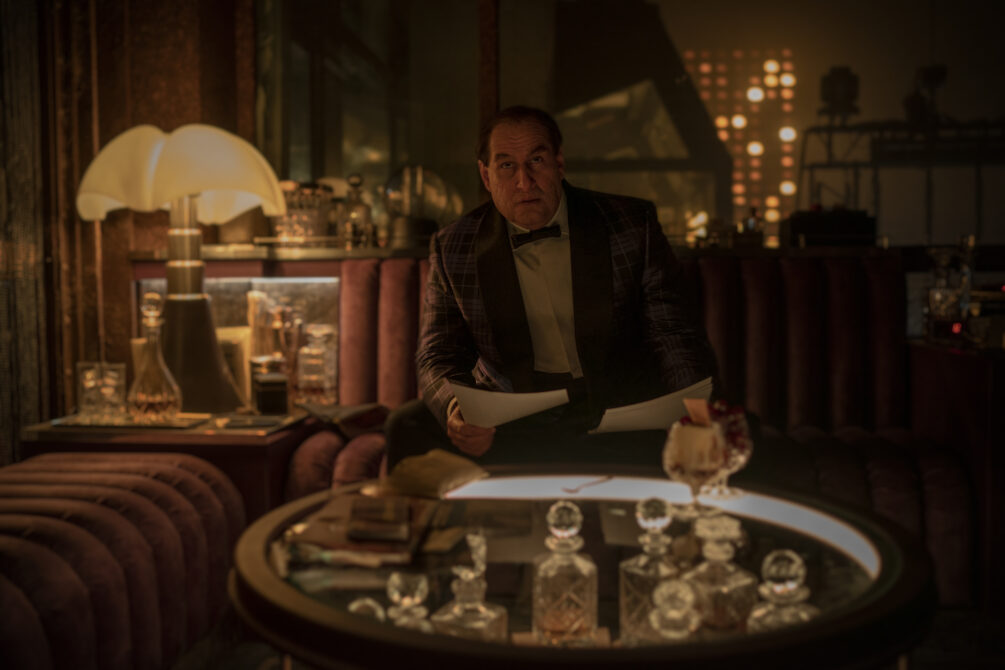
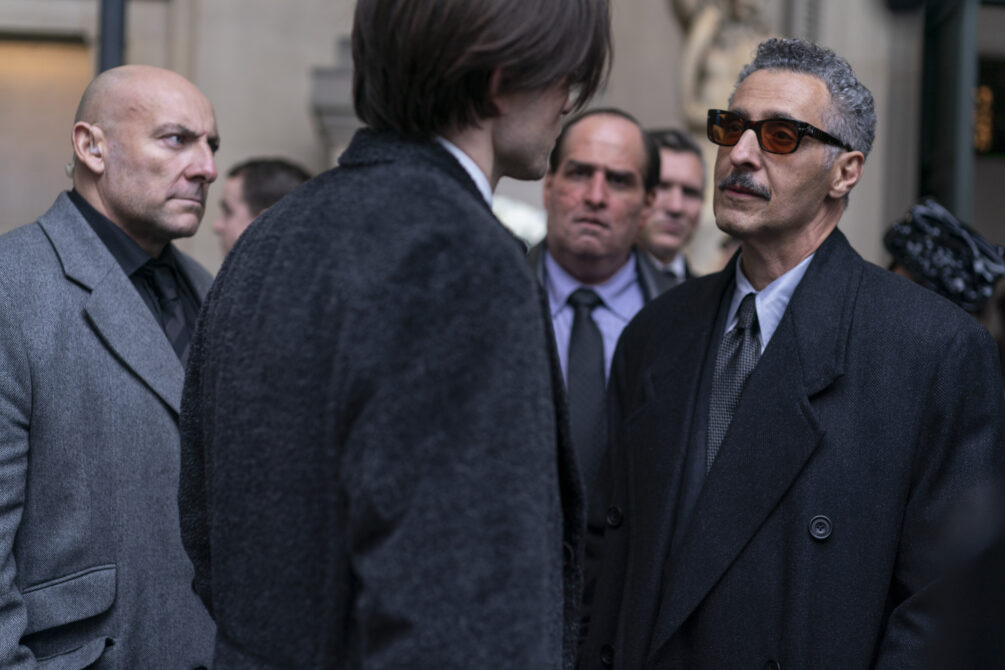
That’s why the reveal of Falcone as the rat becomes all the more intriguing. Reeves laid it all out for us just how dangerous and malicious the guy was. He is given a kind exterior (or as kind a demeanor you can provide a known criminal leader), but finding out he’s the source of pain for Selina and Bruce makes the discovery relishable. As Selina’s father and the murderer of her mother, you see the brutality behind the facade of a distinguished, collected mobster. The connection between Falcone and Thomas Wayne rattles Bruce to his core, given what he believed about his father. And still having leadership over Gotham, despite ratting on associates and underlings (as everyone knows, a rat…is a fucking rat), definitely doesn’t sit well with Oz.
I said before in my introduction that the design of Gotham City was my absolute favorite. One of the things lacking in Nolan’s trilogy was the Gothic look (or a look in general, we could tell it was just Chicago). The evidence of an older city, with new shit built around it but not overtaking it. A neo-classical look, like New York but with flair. It’s a specific look in the comics, and I think it was nailed here by the production design team and the VFX crew. Look at this image of Alfred in Wayne Tower, Bruce’s familial home.
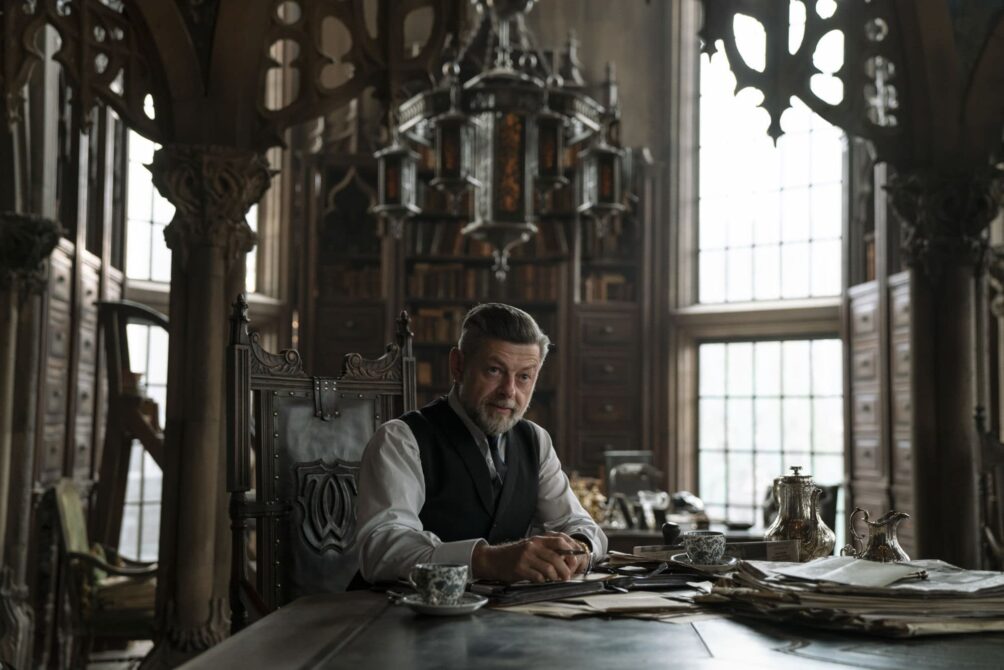
Tell me this isn’t some old-fashioned, gothic architecture you’d expect from an old white family like the Waynes. It’s perfect in its antiquity, given that Bruce would probably do next to nothing to change the look or upkeep this aspect of his family’s legacy. The whole cityscape gave me old Blade Runner: 2049 vibes. Looking at the sprawling streets of crime and filth, it was like someone said let’s make it the worst version of New York City, but with ~~atmosphere~~.
Greg Fraser’s cinematography goes hand in hand with this, each shot framed perfectly in terms of visual language. There wasn’t a wasted motion, an unpurposeful angle that didn’t heighten the story elements or a character vignette. It seems like he was going for that “every frame a painting” motto everyone raves about because you can screengrab any frame, and it’s a well-crafted image on its own. If there were any Oscars for The Batman to be nominated for, it could pull a clean sweep in the technical categories like Dune.
Any Batman film must inevitably face comparison to Chris Nolan’s excellent The Dark Knight. This isn’t without fair reasoning, mind you; it was an inventive singular film encapsulating the moral scrutiny Batman would face in the real world. It’s an aspiration, a rendering you should seek to surpass or find equal footing with when making a similarly probing film.
The Batman poses a question consistent with the one presented in Dark Knight: what is Batman’s purpose? What is the goal, really? Nolan fanboys, please don’t bash me for this one, but I gleaned a sufficient answer in Reeves’ film over Nolan’s. I’m not demeaning his take, not at all, but I found the context – the meat and bones – behind Reeve’s vision to support the hero’s self-assessment at the end better than Nolan’s. Here’s why I think so:
In the opening monologue, Bruce postulates, “I wish I could say I’m making a difference, but I don’t know…This city’s eating itself. Maybe it can’t be saved, but I have to try.” And after everything, faced with the repercussions his vengeful mission wrought, he ends the film with this, “I have had an effect here. But not the one I intended... I have to become more. People need hope. To know someone’s out there for them.“
Both monologues come after two major scenes involving Batman and his approach to fighting crime.
Batman fends off a small gang at a train station from attacking a man in our opening scene. He comes upon them from the shadows, beats the piss out of the leader as he approaches him, and declares himself vengeance. Batman proceeds to take down everyone else, save for one gang member who was reluctant to commit the attack. Despite saving him from harm, albeit brutally, the man is frightened and begs Batman “not to hurt him.” Bruce doesn’t have time to respond before the Bat-Signal summons him. Of course, we can reflect on that moment, saying, “Oh, even the innocent citizens are afraid of him. Must make being a hero hard.”
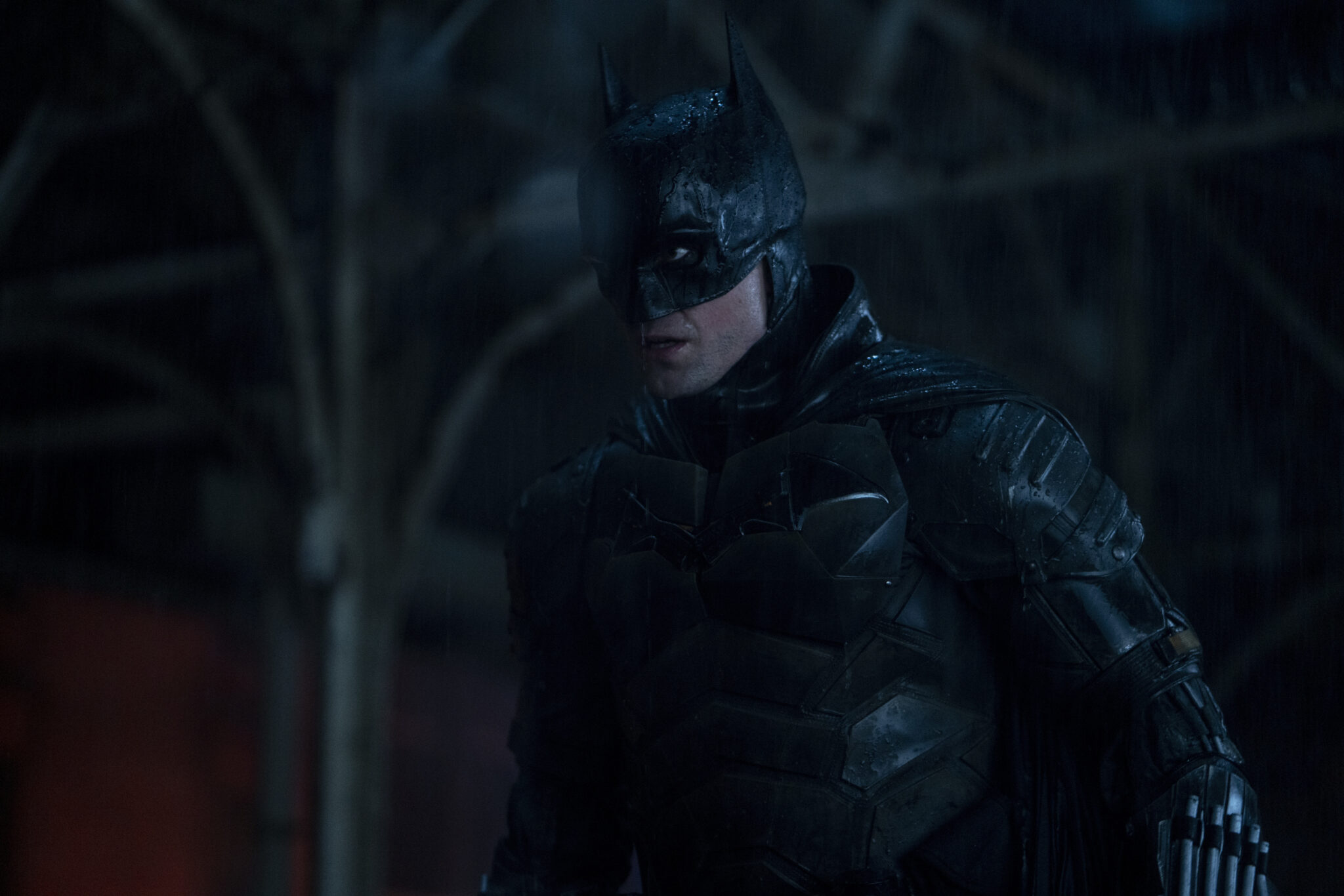
The second monologue comes after the final battle, where he’s exposed to his part in the problem. Despite the Riddler’s imprisonment, he still allows the city to flood from his intricately-placed bombs and recruits disgruntled Gotham citizens to assassinate the newly elected mayor and other elitists. After fending off these “trolls in action,” he recognizes one of the attackers as a man from Mitchell’s memorial service who was vocal about his hatred of the rich and powerful. The man declares himself vengeance, disturbing Batman to hear his phrase used as an excuse to commit this insurgency.
It’s at this moment he sees evidence of his effect. He sees the similarities between him and the Riddler that he was afraid of facing initially. He can’t just be a hard-nosed vigilante who pummels lawbreakers on the streets. He looks down at the people in peril and jumps down. He rises from the water, renewed as he leads them to safety. It’s a crazily-invoking sequence that, through imagery alone, captures this new development of Batman into a true hero. Both personas must embrace a new tactic: Wayne must do more with his position in the elite class, and Batman must become “approachable,” a symbol for the people.
It’s the movie we deserve…it’s the movie you need to see right now…
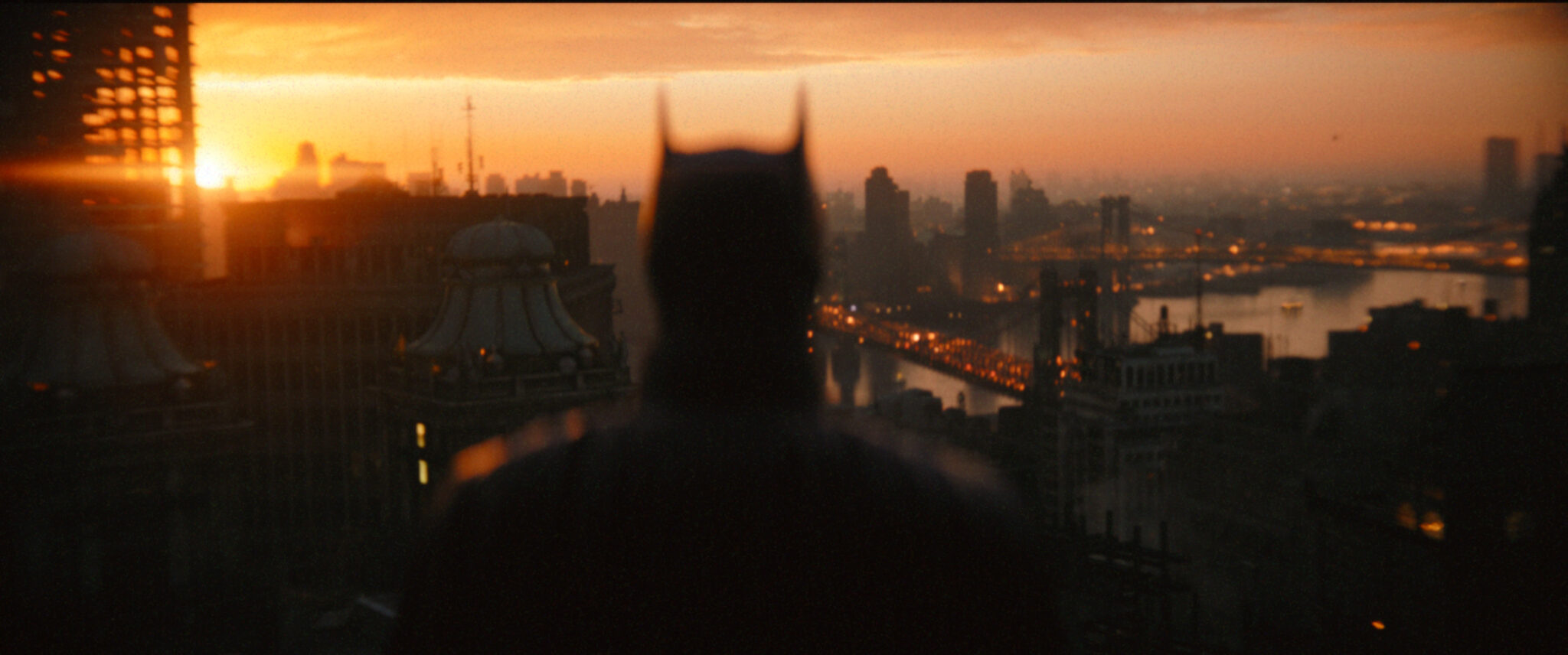
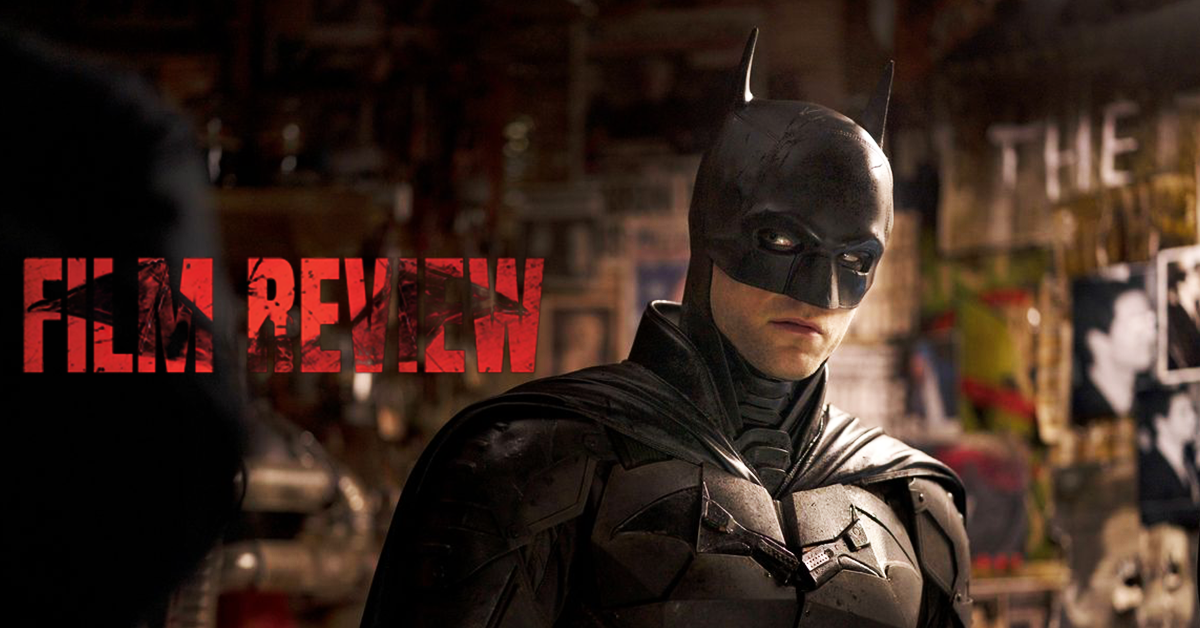
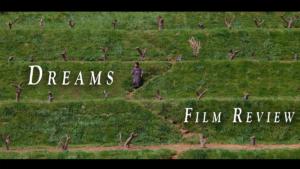
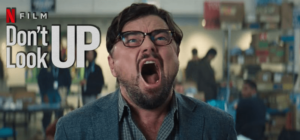
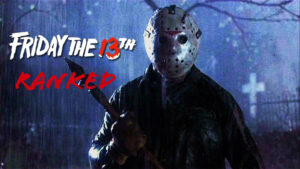
I have no good excuse as to why I have not seen this movie yet, when I planned on seeing it opening weekend. Hoping to get there this weekend! Great post!
As you can tell, all I can do is rave about it! Thank you for reading ?